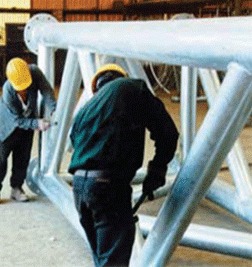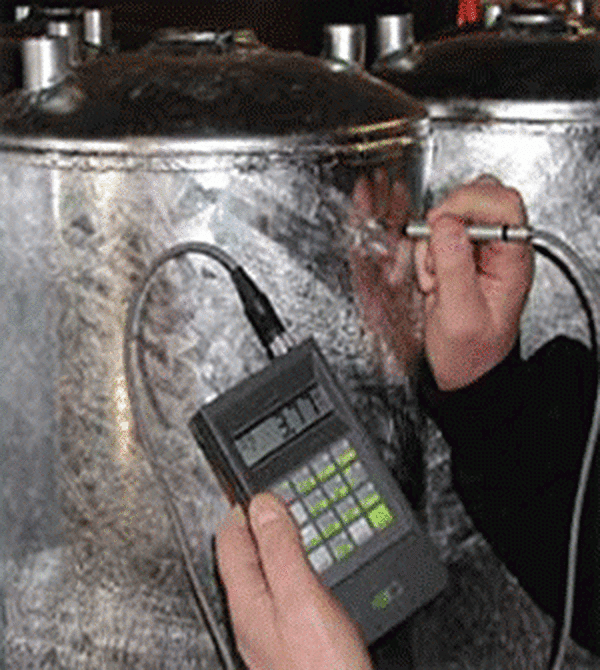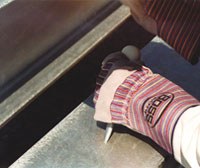Inspection

After hot-dip galvanizing, the finished steel product is inspected to ensure compliance with applicable specifications. The inspection process requires a clear understanding of specification requirements and compliance measurement techniques to make an accurate assessment. While coating thickness is often the most closely scrutinized, there are other key requirements including adherence, finish, and appearance. Zinc will not react with unclean steel, therefore a visual inspection of the product will provide a good assessment of the quality of the coating (finish/appearance). The test for adherence is a referee test performed when their is cause for concern.
Coating Thickness
Coating thickness refers to the thickness of the final hot-dip galvanized coating. Two different methods are used to measure the coating thickness of hot-dip galvanized steel; a magnetic thickness gauge and optical microscopy. Utilizing a magnetic thickness gauge is a non-destructive, simple way to measure coating thickness.

A sampling protocol has been adopted by ASTM to ensure high quality products because the inspection of the coating thickness for every piece of material galvanized in a project would not be practical. To properly evaluate hot-dip galvanized coatings, randomly chosen specimens are selected to represent the lot. The inspection quantities are determined by the lot sizes and are detailed in the ASTM specifications A123/A123M, A153/A153M, and A767/A767M. For products whose surface area is equal to or less than 160 in2 (1032 cm2), the entire surface of the tested product constitutes a single specimen. Products containing multiple material categories or steel thickness ranges and products with surface areas greater than 160 in2 (1032 cm2) are considered multi-specimen products.
The specifications contain detailed information, but a couple of universal practices are recognized:
- At least five widely dispersed measurements must be performed per specimen
- Average for each specimen should not be less than one thickness grade lower than material category

Adherence Testing
Adherence is usually never a problem but can be tested using a stout knife. To test the zinc coating adherence, run a stout knife smoothly along the surface of the steel without whittling and gouging, as detailed in the ASTM specifications A123/A123M and A153/A153M. The coating shall be deemed not adherent if the coating flakes off, exposing the base metal in advance of the knife point.
Stout Knife Test
- Not on edges/corners
- Run point of knife along the surface smoothly
- No gouging/whittling
- Coating must not flake